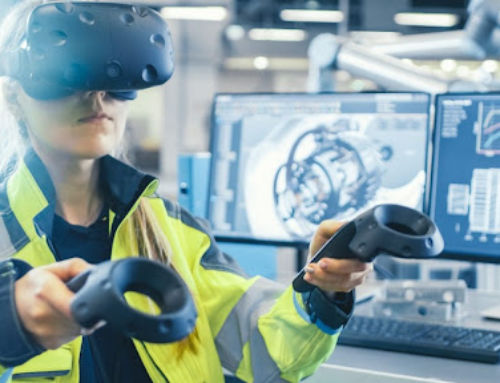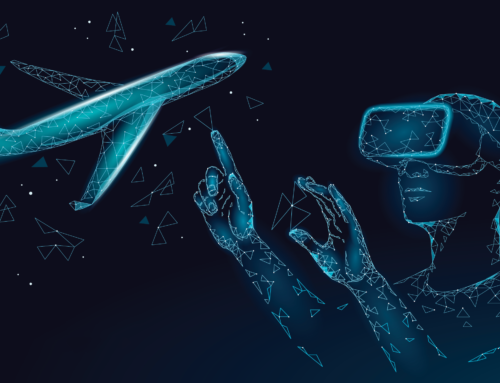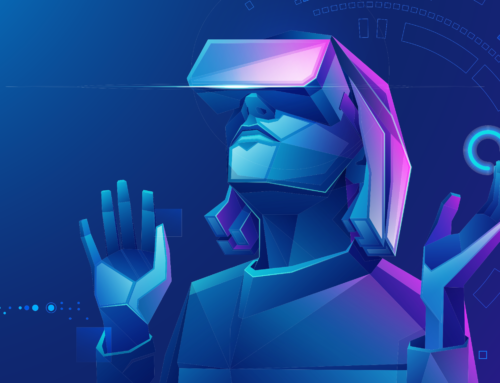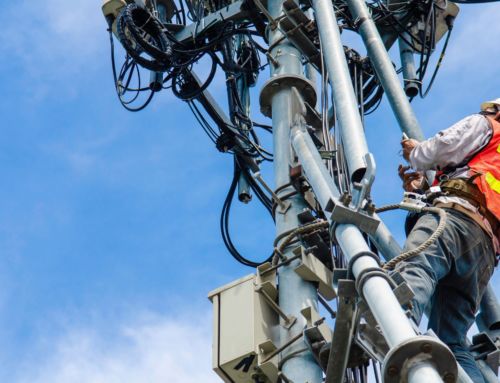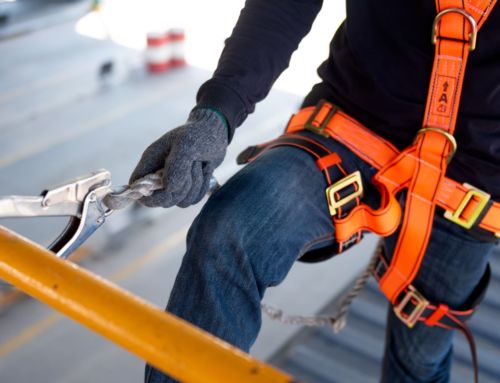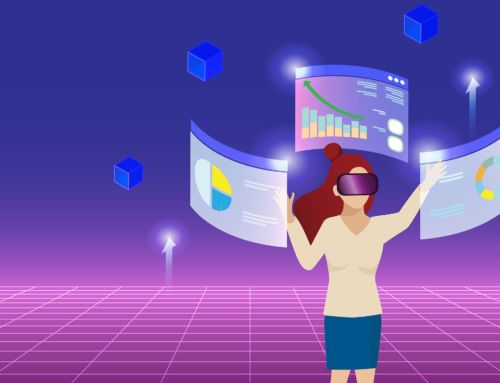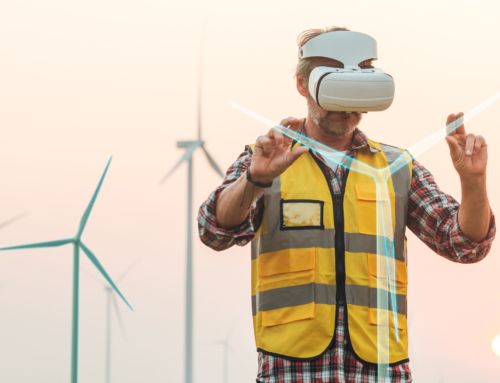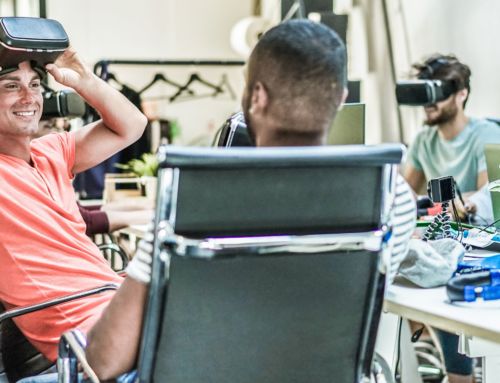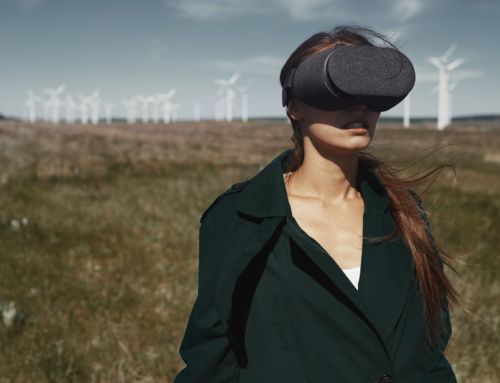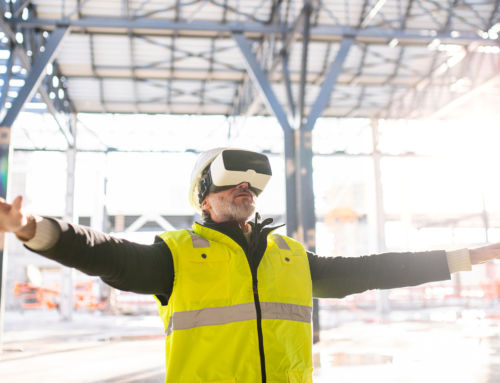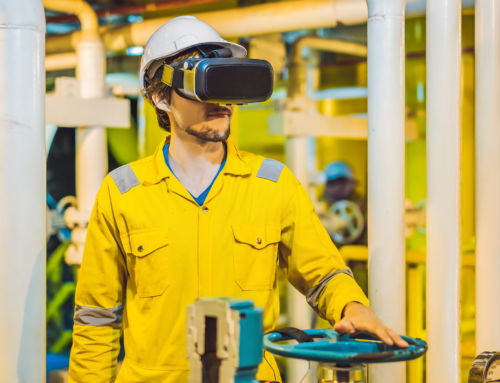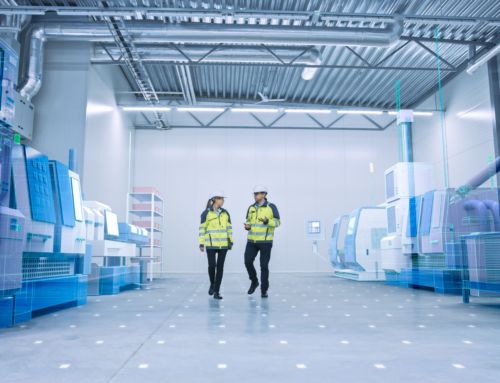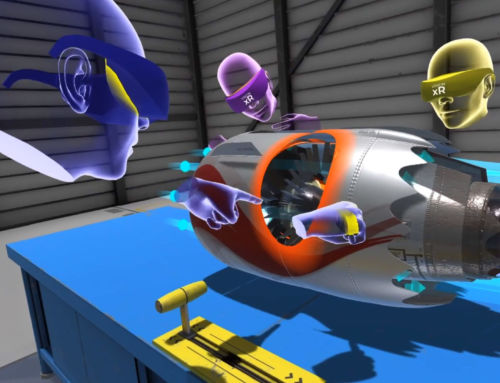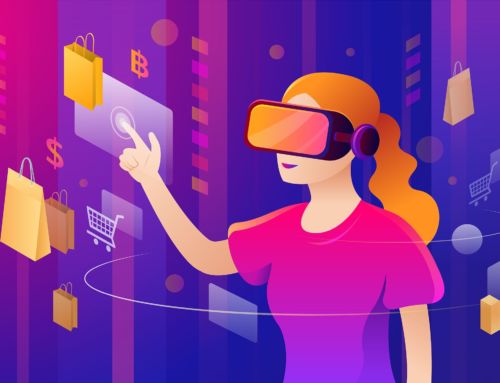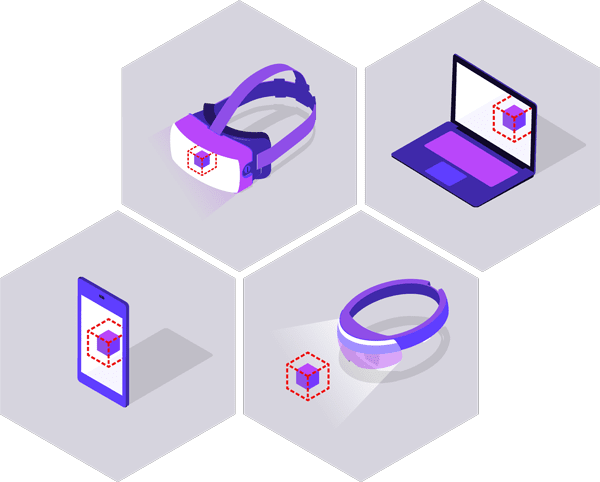Key Takeaways
The Future of Health & Safety Training
Virtual reality and training are a match made in heaven, taking simulation training to the next level.
Virtual reality platforms such as Future Visual’s VISIONxR can accurately replicate work spaces, offering a truly immersive, collaborative and practical space to get hands-on experience undertaking tasks. This makes it the perfect tool for health and safety training, allowing learners to perfect their skills in dealing with hazardous conditions and dangerous equipment, without being exposed to real world dangers.
Benefits of Using VR for Safety Training
-
Safety training that’s safe
The catch-22 for health and safety training across many sectors is that hands-on, practical training is, quite simply, unsafe.
From working with hazardous equipment to dangerous environments or undertaking highly technical and precision tasks where the smallest error could prove fatal, learning on the job is often out of the question.
And this is where virtual reality’s strengths come into play. Work based scenarios can be realistically replicated in a virtual world, so that practice based training can be undertaken in a risk-free environment.
-
Practice makes perfect
Unlike more traditional training techniques, the learning experience isn’t limited by a specific timeframe. Training can be accessed at a time and place that’s convenient for the learner – and can be repeated multiple times. By doing this, learners can perfect their skills and improve knowledge retention.
What’s more, the learner’s knowledge and skills can be monitored and evaluated throughout the training. VR experiences are developed with key performance metrics in mind and these, along with biometric measures, such as eye and hand movement, body temperature and heartbeat can also be monitored to help assess the learner’s abilities to cope in stressful and hazardous situations.
-
Reduces training costs and training time
There is evidence to suggest that VR is a far speedier way to learn new skills. In its Seeing is Believing report, PwC noted that VR learners completed training 4 times faster than classroom training. Moreover, and what’s more, learning is retained more effectively.
In a recent study by the National Training Laboratory, VR had a 75% retention rate; significantly higher than traditional learning methods such as lecture-style learning (5 percent) and reading (10 percent). By training smarter and faster, VR offers a cost effective solution for upskilling employees.
-
Environmentally friendly
More traditional simulated training experience and classroom based learning often require learners to travel to a specific place, at a specific time to undertake training. A key benefit of VR is that it can be accessed anywhere, bringing employees together in a collaborative virtual space wherever they may be in the world.
Potential Obstacles to Successful Adoption of VR
-
Initial outlay and senior management buy-in
While virtual reality can offer a cost effective way to train employees at scale, it comes with the need to invest at the start. This can potentially impact on the attractiveness of VR as a training tool, and takes a leap of faith from your senior management team. Getting their buy-in is crucial, so make sure you’re prepared with a good business case and can prove the return on the investment
-
Procuring equipment
What’s more, bulk ordering hardware and distributing it to employees can be challenging – especially for companies introducing VR at scale across the globe. Make sure that before you commit to developing VR training experiences that you can procure the right amount of equipment to meet your company’s needs.
-
Sickness/balance issues
Although VR content development has significantly improved over the years, some people accessing virtual reality may feel nauseous when in the experience. This happens when there is a disconnect in how you are moving in the real world, against what you are seeing in the experience. This may be a temporary reaction when learners experience VR for the first time – so when introducing VR into your training portfolio, make sure you brief learners what to expect and how to cope if they experience sickness.
-
Space
One of the key benefits of VR is that it transports learners to digital worlds. The downside of this total immersion is that it effectively blinds learners to anything they are sharing their physical space, such as trip hazards and furniture to bump into. Learners, especially those training remotely, need clear instructions for how to prepare their training space and allow enough room to move around safely.
-
Technical abilities
A training programme may be the first time that your employees have experienced VR, so it may be daunting to many who aren’t particularly tech savvy – especially more mature members of the team who aren’t digital natives. When developing training solutions, employees’ technical abilities need to be taken into consideration, so that experiences are accessible and engaging experiences that don’t require complex actions and instructions.
Use Cases for VR Safety Training
-
Renewables
The growth of offshore wind farms is at the forefront of the UK’s drive towards renewable energy and the drive to net zero. As with any developing sector, there is a critical business need to address skills gaps by developing effective ways to train the workforce at scale.
Pioneers in offshore wind farms, Siemens Gamesa has developed immersive training modules for technician trainees to learn how to safely undertake key tasks in a simulated high elevation and enclosed spaces, to replicate real life working environments. Training performance is monitored so trainees can receive accurate assessment and address areas for improvement in performance.
Moreover, Siemens can analyse real time footage to gain insights into the types of scenarios that are prone to high error, to ensure future training can be tailored to address these issues and ultimately lower risk for employees.
-
Construction
“The use of digital technologies like virtual and augmented reality in construction training can produce workers with greater ability and help modernise the industry. At a time where the industry is facing challenges to its workforce, it’s vital that we invest in immersive learning.”
Ben Lever, Future Skills and Innovation Lead at CITB
Construction sites are dangerous places – with a high risk of accidents that could be potentially fatal. Construction companies such as Germany’s Bechtel are harnessing the power of Building Information Modelling (BIM) technology to create realistic VR simulations. Employees are able to virtually visit areas of risk, to improve spatial awareness and learn more about best safety practices in each scenario. This is being implemented across a variety of roles, such as crane operators.
-
Manufacturing
With complex and potentially hazardous equipment in factories, manufacturing companies can also benefit from introducing VR training to improve safety across operations. Gabler Engineering is pioneering VR training by introducing experiences for operators of the machines that Gabler produces. By doing this, Gabler employees are able to practice procedures to hone their skills and build confidence in their own abilities.
How to Begin
Virtual reality can be an impactful and effective tool for improving competency in the workplace to help keep your employees safer. If you’re considering introducing virtual reality into your organisation’s business health and safety training programme, how can you successfully implement it?
The key is in the planning. Make sure that you have clear objectives and learning outcomes established from the start – and that VR Is the best tool got the job. It’s also a great idea to get senior managers – and employees engaged early in the development process, to get organisational buy-in, as well as the chance to test and refine your training intervention. And finally, don’t forget, selecting the right content developer, such as Future Visual can take your VR training experience to the next level.
Contact us today to find out more!
Key Takeaways
The Future of Health & Safety Training
Virtual reality and training are a match made in heaven, taking simulation training to the next level.
Virtual reality platforms such as Future Visual’s VISIONxR can accurately replicate work spaces, offering a truly immersive, collaborative and practical space to get hands-on experience undertaking tasks. This makes it the perfect tool for health and safety training, allowing learners to perfect their skills in dealing with hazardous conditions and dangerous equipment, without being exposed to real world dangers.
Benefits of Using VR for Safety Training
-
Safety training that’s safe
The catch-22 for health and safety training across many sectors is that hands-on, practical training is, quite simply, unsafe.
From working with hazardous equipment to dangerous environments or undertaking highly technical and precision tasks where the smallest error could prove fatal, learning on the job is often out of the question.
And this is where virtual reality’s strengths come into play. Work based scenarios can be realistically replicated in a virtual world, so that practice based training can be undertaken in a risk-free environment.
-
Practice makes perfect
Unlike more traditional training techniques, the learning experience isn’t limited by a specific timeframe. Training can be accessed at a time and place that’s convenient for the learner – and can be repeated multiple times. By doing this, learners can perfect their skills and improve knowledge retention.
What’s more, the learner’s knowledge and skills can be monitored and evaluated throughout the training. VR experiences are developed with key performance metrics in mind and these, along with biometric measures, such as eye and hand movement, body temperature and heartbeat can also be monitored to help assess the learner’s abilities to cope in stressful and hazardous situations.
-
Reduces training costs and training time
There is evidence to suggest that VR is a far speedier way to learn new skills. In its Seeing is Believing report, PwC noted that VR learners completed training 4 times faster than classroom training. Moreover, and what’s more, learning is retained more effectively.
In a recent study by the National Training Laboratory, VR had a 75% retention rate; significantly higher than traditional learning methods such as lecture-style learning (5 percent) and reading (10 percent). By training smarter and faster, VR offers a cost effective solution for upskilling employees.
-
Environmentally friendly
More traditional simulated training experience and classroom based learning often require learners to travel to a specific place, at a specific time to undertake training. A key benefit of VR is that it can be accessed anywhere, bringing employees together in a collaborative virtual space wherever they may be in the world.
Potential Obstacles to Successful Adoption of VR
-
Initial outlay and senior management buy-in
While virtual reality can offer a cost effective way to train employees at scale, it comes with the need to invest at the start. This can potentially impact on the attractiveness of VR as a training tool, and takes a leap of faith from your senior management team. Getting their buy-in is crucial, so make sure you’re prepared with a good business case and can prove the return on the investment
-
Procuring equipment
What’s more, bulk ordering hardware and distributing it to employees can be challenging – especially for companies introducing VR at scale across the globe. Make sure that before you commit to developing VR training experiences that you can procure the right amount of equipment to meet your company’s needs.
-
Sickness/balance issues
Although VR content development has significantly improved over the years, some people accessing virtual reality may feel nauseous when in the experience. This happens when there is a disconnect in how you are moving in the real world, against what you are seeing in the experience. This may be a temporary reaction when learners experience VR for the first time – so when introducing VR into your training portfolio, make sure you brief learners what to expect and how to cope if they experience sickness.
-
Space
One of the key benefits of VR is that it transports learners to digital worlds. The downside of this total immersion is that it effectively blinds learners to anything they are sharing their physical space, such as trip hazards and furniture to bump into. Learners, especially those training remotely, need clear instructions for how to prepare their training space and allow enough room to move around safely.
-
Technical abilities
A training programme may be the first time that your employees have experienced VR, so it may be daunting to many who aren’t particularly tech savvy – especially more mature members of the team who aren’t digital natives. When developing training solutions, employees’ technical abilities need to be taken into consideration, so that experiences are accessible and engaging experiences that don’t require complex actions and instructions.
Use Cases for VR Safety Training
-
Renewables
The growth of offshore wind farms is at the forefront of the UK’s drive towards renewable energy and the drive to net zero. As with any developing sector, there is a critical business need to address skills gaps by developing effective ways to train the workforce at scale.
Pioneers in offshore wind farms, Siemens Gamesa has developed immersive training modules for technician trainees to learn how to safely undertake key tasks in a simulated high elevation and enclosed spaces, to replicate real life working environments. Training performance is monitored so trainees can receive accurate assessment and address areas for improvement in performance.
Moreover, Siemens can analyse real time footage to gain insights into the types of scenarios that are prone to high error, to ensure future training can be tailored to address these issues and ultimately lower risk for employees.
-
Construction
“The use of digital technologies like virtual and augmented reality in construction training can produce workers with greater ability and help modernise the industry. At a time where the industry is facing challenges to its workforce, it’s vital that we invest in immersive learning.”
Ben Lever, Future Skills and Innovation Lead at CITB
Construction sites are dangerous places – with a high risk of accidents that could be potentially fatal. Construction companies such as Germany’s Bechtel are harnessing the power of Building Information Modelling (BIM) technology to create realistic VR simulations. Employees are able to virtually visit areas of risk, to improve spatial awareness and learn more about best safety practices in each scenario. This is being implemented across a variety of roles, such as crane operators.
-
Manufacturing
With complex and potentially hazardous equipment in factories, manufacturing companies can also benefit from introducing VR training to improve safety across operations. Gabler Engineering is pioneering VR training by introducing experiences for operators of the machines that Gabler produces. By doing this, Gabler employees are able to practice procedures to hone their skills and build confidence in their own abilities.
How to Begin
Virtual reality can be an impactful and effective tool for improving competency in the workplace to help keep your employees safer. If you’re considering introducing virtual reality into your organisation’s business health and safety training programme, how can you successfully implement it?
The key is in the planning. Make sure that you have clear objectives and learning outcomes established from the start – and that VR Is the best tool got the job. It’s also a great idea to get senior managers – and employees engaged early in the development process, to get organisational buy-in, as well as the chance to test and refine your training intervention. And finally, don’t forget, selecting the right content developer, such as Future Visual can take your VR training experience to the next level.







